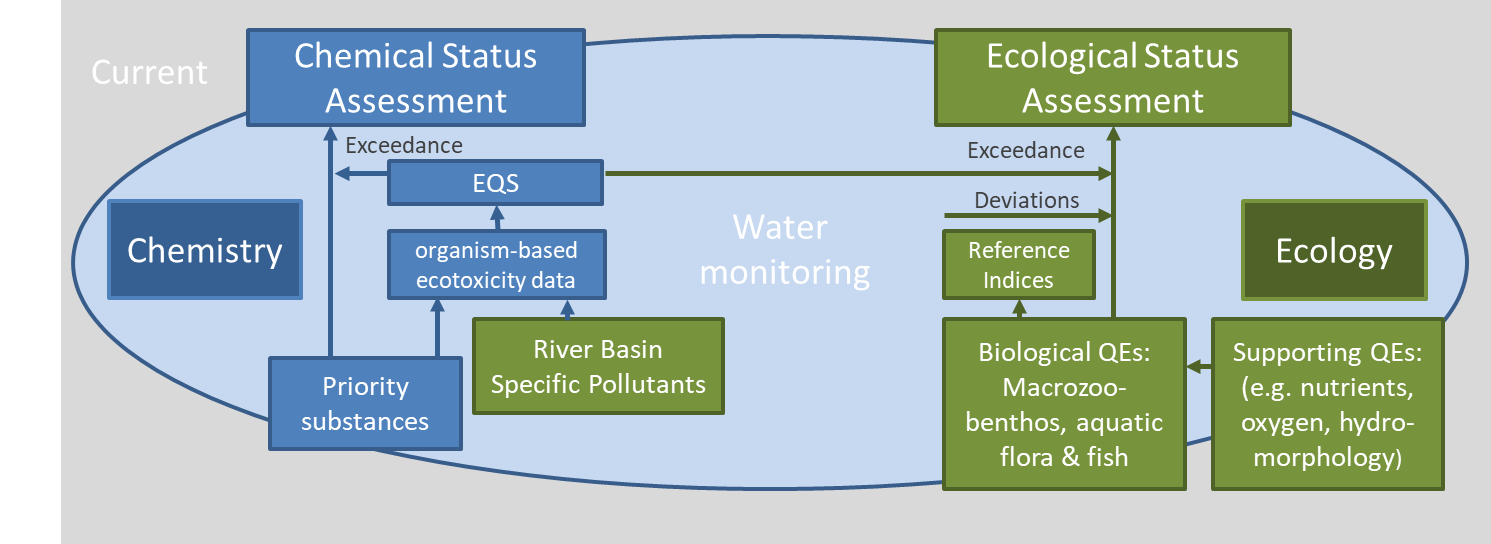Post a comment on the text below
2.2. Chemical and ecological status
The Water Framework Directive (WFD) assesses chemical and ecological status of surface water bodies separately. However, organisms living in the water experience an integration of all the influences present. The different statuses can lead to the criticism that the reported “chemical status” may be remote from what is actually occurring in the water ecosystem.
The chemical status of surface waters under the WFD is based on a comparison of measured concentrations of EU-wide consented priority substances with target levels established under the Environmental Quality Standards Directive (EC, 2008a). Ecological status is assessed from monitoring data on biological quality elements (BQE) such as benthic invertebrate fauna, phytoplankton, macrophytes, and fish. Additionally, data on hydromorphology (physical characteristics), physico-chemical water parameters and RBSPs can be used (figure 2.1). Owing to the particular geographic circumstances of any particular water body, assessment of ecological status is made with reference to specific local factors.
Figure 2.1: Overview on the current status assessment approach under the WFD

The value of chemical measurements in rivers and lakes is that they allow direct comparison of concentrations between sites. Furthermore, they can be related to emission loads and, therefore, controls can be directed towards specific sources of chemical pollution. However, among the criticisms of this approach are that ecological structures and functions, key targets of chemical pollution, can be poorly related to specific chemical measurements. In particular, pollution by emerging compounds may be overlooked.
Efforts to link chemical occurrence and ecological effects are not required under the WFD and failures to achieve good ecological status, solely driven by chemical pollution (e.g. RBSPs), are rarely observed.
You cannot post comments to this consultation because you are not authenticated. Please log in.



Previous comments
POLAND
It seems important to mention that the chemical status is also assessed in artificial and heavily modified water bodies therefore it would be beneficial to add to the figure on the bootom of page 12 a link between chemical status assessment and ecological potential assessment as well as to change the name of the section into "chemical status and ecological status/potential assessment". The above mentioned remark is valid for the following figures where there is also only ecological status mentioned.
DE-NW:
Figure: The arrow from RBSPs should not got to chemical status but instead to ecological status - even though in both cases a EQS is derived.
Please consider reconstructing the scheme in a way that it better reflects this aspect.